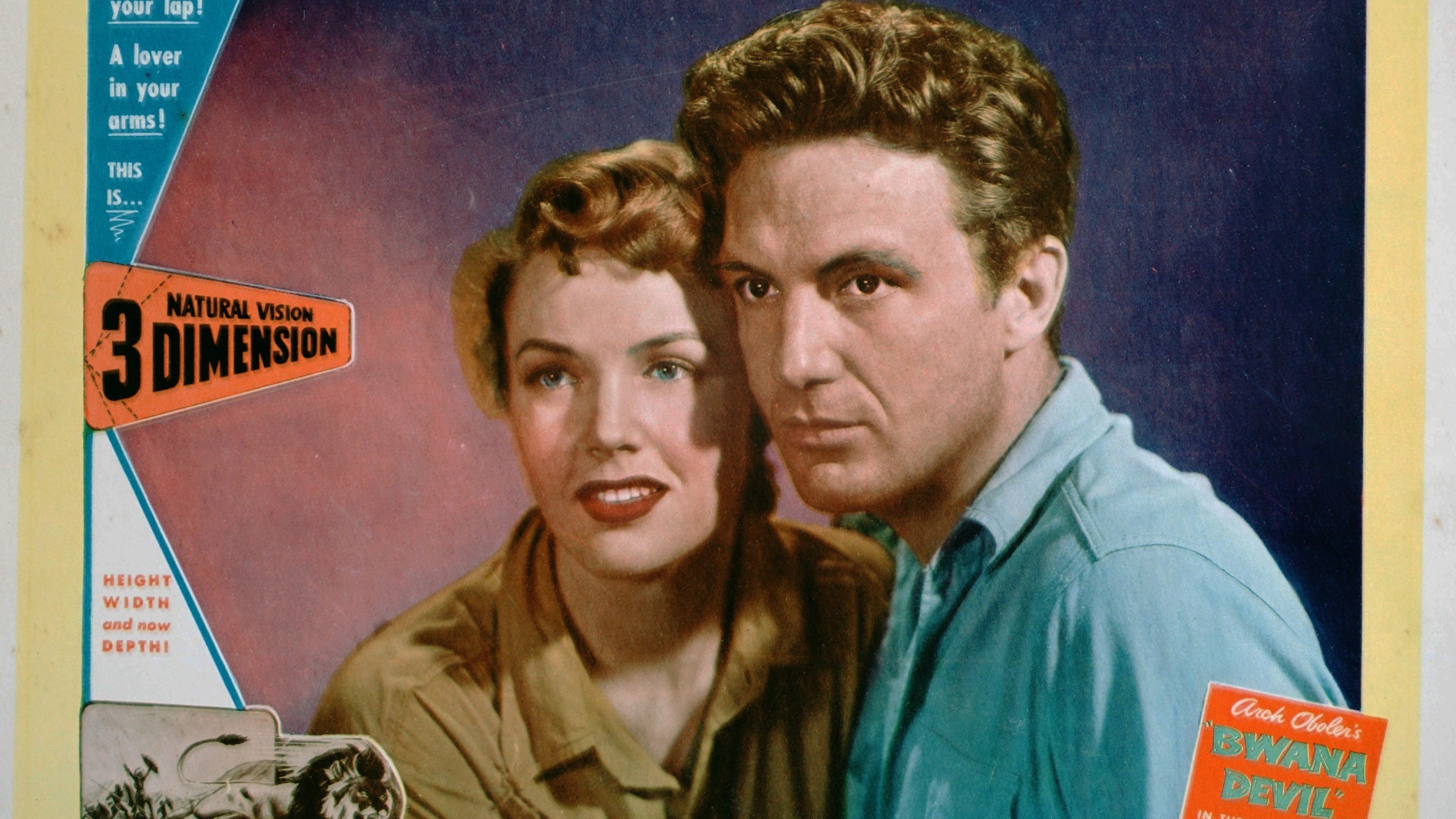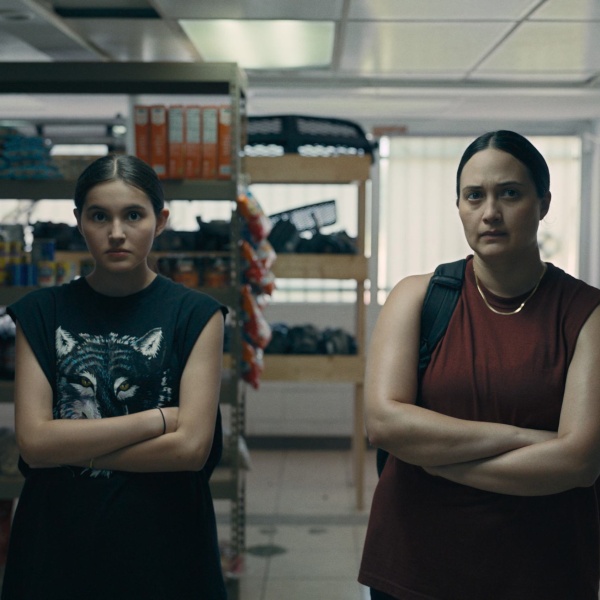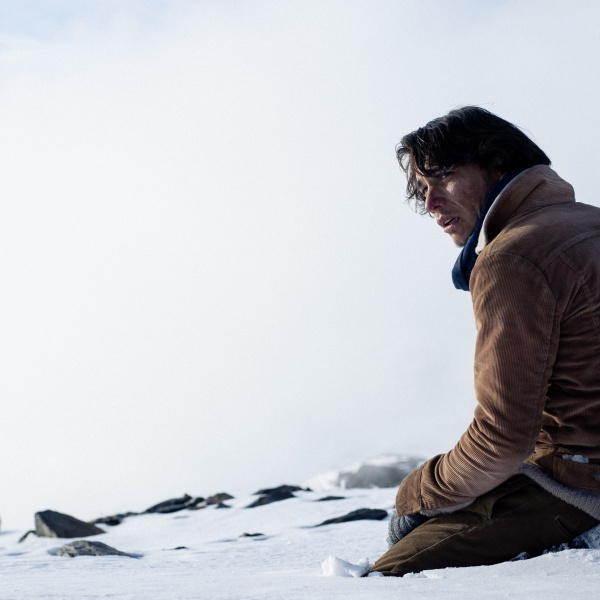2024 has been an extraordinary year for film preservation, with theatrical premieres of new restorations of “The Searchers” and “North by Northwest” unspooling at festivals and repertory houses while pristine new editions of essential films like Michael Powell’s “Peeping Tom” and Martha Coolidge’s “Not a Pretty Picture” become available for home viewing via 4K and Blu-ray releases. The 1952 adventure film “Bwana Devil” is not held in as high regard as those classics by most cinephiles, but its restoration and Blu-ray release from Kino Lorber are just as significant. The first color 3D feature film, “Bwana Devil” was a game changer in Hollywood history, and Kino’s Blu-ray provides the first chance in decades to see it as it was originally presented — an experience that reveals “Bwana Devil” is a far more exciting film than its tepid reputation would indicate.
“Bwana Devil” was the brainchild of writer, producer, and director Arch Oboler, an independent filmmaker who paired up with entrepreneur Milton Gunzberg when the major studios passed on Gunzberg’s “Natural Vision” 3D process. At the time, the studios were scrambling to develop widescreen formats like Cinerama and CinemaScope in an effort to combat increased competition from television; Oboler, too, was interested in shaking up exhibitions, but he thought 3D was the answer.
Oboler wrote a script based on the true story of marauding lions munching their way through railway workers in 1898 Africa (the same tale that later served as the basis for the Michael Douglas-Val Kilmer vehicle “The Ghost and the Darkness”), cast Hollywood star Robert Stack, and headed for the Paramount Ranch to recreate Uganda in the San Fernando Valley. There’s not a lot of plot in “Bwana Devil,” and what little story exists is mostly just a pretext for animal carnage — the movie has a body count somewhere in the vicinity of George A. Romero’s “Dawn of the Dead.”
Oboler was not the world’s most sophisticated or varied director in his talents, but his gifts as a showman extended well beyond his instinct that 3D would prove irresistible to audiences. “Bwana Devil” is filled with viscerally charged action made thrilling by both Oboler’s inventive use of the 3D format (where he utilizes the increased depth of the frame to generate some extremely effective jump scares) and the sense he creates that anyone in the movie could turn into lion food at any given moment — there are some pretty traumatic moments where characters we thought were safe get eaten and almost immediately forgotten.
Oboler’s independent film initially opened in a pair of specially outfitted Los Angeles theaters in late 1952, and it was an immediate smash hit, which led the studios to put their own 3D projects into development and production. 1953 and 1954 saw the release of dozens of 3D movies, from glossy fare like Warners’ “House of Wax” and MGM’s “Kiss Me Kate” to silly slapstick (the Three Stooges comedies “Spooks” and “Pardon My Backfire”) and animated shorts starring Casper and Popeye.

Unfortunately, the expense and technical complexity of projecting 3D, which required two projectors running side by side in perfect sync and a silver projection screen, killed the process off when it had barely gotten started, especially once CinemaScope came in as a viable alternative for providing big-screen spectacle. 3D came and went so quickly, in fact, that by the time Alfred Hitchcock’s “Dial M for Murder” was completed, the process was already dead, and Hitch’s 3D experiment wasn’t released in the format he shot it in — at least, not until 3D made a brief comeback in the early 1980s, reviving “Dial M For Murder” to feed the newly voracious appetite for the format created by the surprise success of “Comin’ At Ya!,” the “Bwana Devil” of 1981.
While “Bwana Devil” was a commercial success, it wasn’t a critical one; reviews at the time dismissed the movie as a gimmick without redeeming value, an assessment that has more or less held over time. Yet viewed today via the 3D Film Archive’s extraordinary restoration, “Bwana Devil” is undeniably impressive, which leads one to believe its poor reputation has more to do with the vagaries of exhibition than the film’s actual merits or deficiencies. It’s entirely likely that contemporary critics like the one in Variety who took issue with the film’s technical quality saw a flawed presentation since 3D projection was so finicky — if even one frame on either projector got out of sync, the process didn’t work.
The fact that “Bwana Devil” was barely shown in 3D after its initial theatrical release means later critics operated at an even greater disadvantage since 3D is essential to its effects. This is what makes Kino’s new release so invaluable; it’s an absolutely flawless presentation that makes it possible to appreciate Gunzberg and Oboler’s innovations in all their glory and ingenuity. As a guerrilla independent Oboler was brilliant at maximizing his resources, and there are some truly awe-inspiring moments here — although the movie was shot in Southern California, the director incorporated 2D footage shot on location in Africa by projecting it onto a screen and placing action and props in the foreground to shoot in 3D.
The effect gives “Bwana Devil” more sweep and scale than it ever should have had, and an impact that can only be felt by watching it in 3D. Kino’s disc comes with anaglyphic 3D glasses for viewers who don’t have 3D television sets (which, sadly, is probably a large percentage of the audience now that manufacturers aren’t making them anymore), and to watch it in either 3D format (anaglyphic or polarized) is to rediscover a rousing adventure film that’s both better than its reputation and, given its status as a film history first, extremely influential. For a variety of technical and economic reasons, 3D always seems to come in brief waves, but “Bwana Devil” is a sturdy reminder of the fun that’s to be had when a filmmaker embraces the format wholeheartedly.
“Bwana Devil” is now available on 3D Blu-ray from Kino Lorber.






